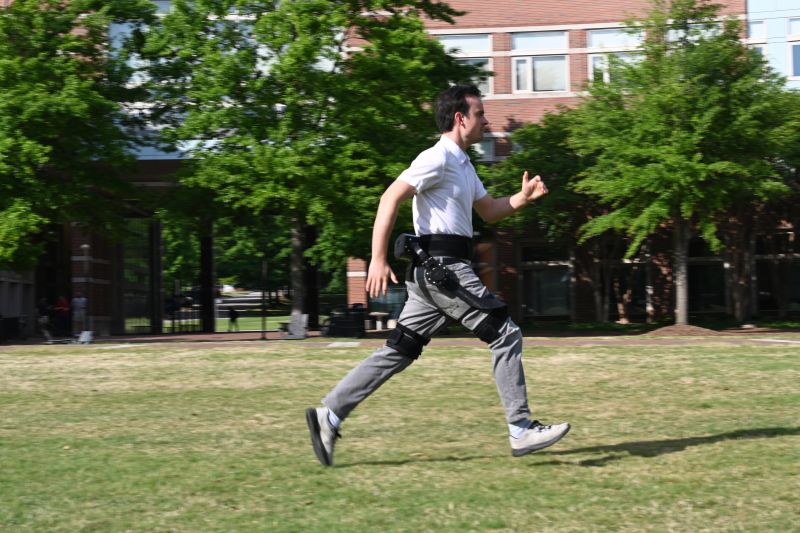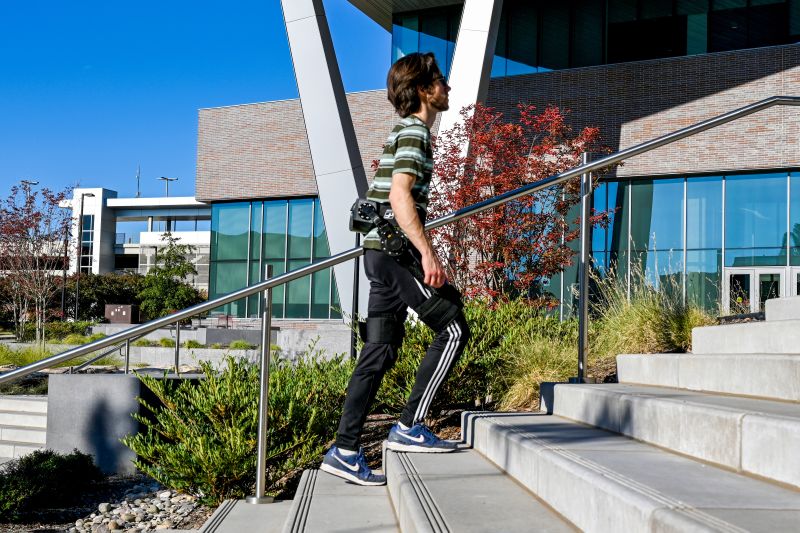NSF-supported research advances exoskeletons – augmenting human capabilities and restoring mobility to those in need
There are exoskeletons in use today, but current technology falls short of the vision laid out in science fiction, and widespread use of exoskeletons is hampered because to work properly, a suit must be tested and adapted to work with each user individually, a complicated and lengthy process.
Now, engineering researchers supported by the U.S. National Science Foundation have made a breakthrough, creating a new method that takes advantage of artificial intelligence and computer simulations to improve the process of enabling users and exoskeletons to work together. This framework is compatible with a variety of assistive devices and could improve the lives of millions of able-bodied and mobility-impaired individuals.
"This marks a major advance in exoskeleton engineering by eliminating one of its biggest hurdles: individualized calibration," said Alexander Leonessa, program director for the NSF Mind, Machine and Motor Nexus program. "Using AI and human-robot simulations, the team developed a scalable, adaptable system that assists a wide range of users without lengthy setup. It is a key step toward making exoskeletons practical, versatile and accessible for both industry and mobility-impaired individuals – smart, human-centered engineering at its best."
Using AI to save time and cost
To enable an exoskeleton to help a user walk, the powered suit must be trained to work with the intended user. This programming process can be time-consuming, costly and labor-intensive because every user and every exoskeleton are unique. Additionally, the programming that enables the exoskeleton is often designed for a specific activity.
To overcome these limitations, the team, located at North Carolina State University, developed a method to apply autonomous control of embodied AI systems, integrating AI into physical robots, to the testing and training process. Using a learning-in-simulation framework that incorporated a human model, a robot model and a model of human-robot interaction, the team was able to control the exoskeleton without requiring the intended users to be involved.
This method would enable humans to use exoskeletons immediately, without extensive testing in a laboratory setting, which can range between 30 to 60 minutes with current algorithms. Moreover, the new method allows a single control policy to assist with multiple activities, such as walking, running and stair climbing.
The work, described in a study published in Nature, was supported by a pair of NSF grants, a CAREER award for helping children with gait disabilities and an NSF Future of Work award to assist older warehouse workers and those with upper limb disabilities.

"I think researchers in the assistive robotics community have been trying to leverage AI to solve real-world problems, but it was actually very challenging for us to figure out how to use it to benefit humans," said Hao Su, an engineering professor (now at New York University) who led the team at NC State. "We didn't know if this solution was feasible when we started this project, so NSF support allowed us to explore this very early phase of research and helped us to answer the important questions.
Broad applications
The researchers tested the new method in real-world scenarios to see if an untethered, lightweight robot could help the user reduce the energy needed to locomote via walking, running or climbing stairs. Study participants used 24.3% less energy when walking with the robotic exoskeleton compared to walking without it, 13.1% less energy when running in the exoskeleton, and 15.4% less energy when climbing stairs.
"The robot will supplement human muscle activity to make a human work easier and with less effort. In this way, we want to potentially reduce the potential for musculoskeletal injury for workers," Su said. "This work is essentially translating science fiction into reality, allowing people to consume less energy while conducting a variety of tasks."

The simulation process also means that additional capabilities can be developed in the lab and then integrated into the hardware. Future prospects include integration with high-torque motors and work with systems designed for use by the elderly. A smaller version of the exoskeleton is being tested to help children with cerebral palsy to improve their posture and help them walk upright.
"We want to build the real-world Iron Man, but it should not be heavy or bulky or impede human locomotion," Su said. "We developed high-torque electric motors and garment-like robot design to make this really lightweight and also developed the software — the AI algorithm part — to make the robot versatile, so it can help humans for different locomotion activities. Assistive robots will be for everyone for everyday use."










-1.png)


